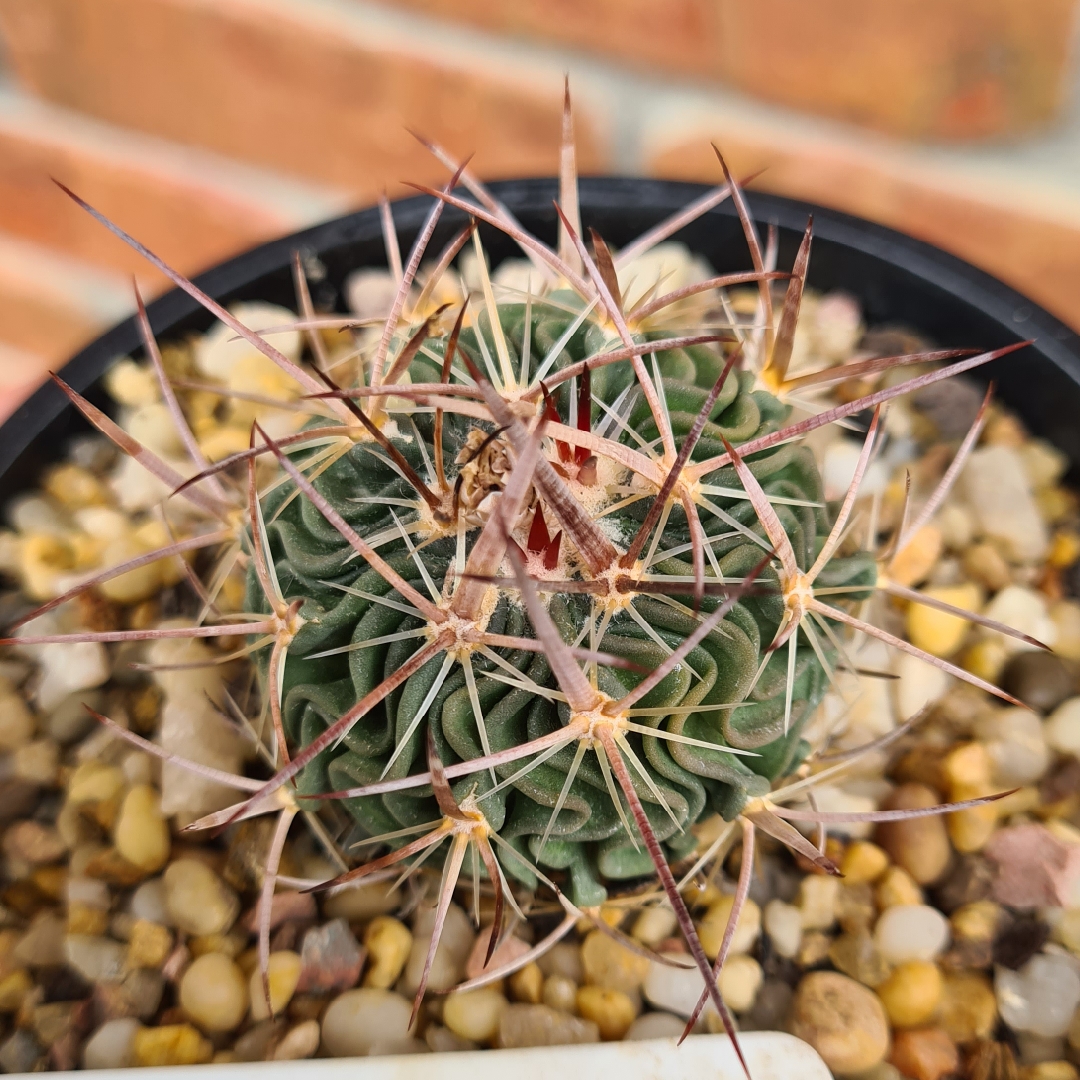
Stenocactus hastatus syn. Echinofossulocactus hastatus
Stenocactus hastatus
Original:Echinocactus hastatus produces a flattened depressed-globose to short cylindrical stem, light green, 10-12 cm in diameter and tall. Flowers are large, white or pink (the largest of the genus). Synonyms include Echinocactus hastatus, Echinofossulocactus hastatus New:Stenocactus is a genus of cacti. A number of species of the genus Stenocactus are popular in cultivation. The plants are globose and remain relatively small so easy to manage in pots. They grow easily and flower readily in the spring. In addition to their ball-shape, most species in this genus have unique fin-like ribs that are numerous. This gives them a look like under sea coral. Spines are usually present and prominent, but not to the point of covering the stem. Flowers grow at the apex and are often white with a wide, dark pink midstripe, but can also be a plain creamy white. This genus is native to the Chihuahuan desert in Mexico. Individual plants can vary considerably within a species and this makes identification in this genus very difficult. There is a very long and convoluted nomenclatural history, but the genus is often still grown and traded among collectors under the genus name Echinofossulocactus The following genera have been brought into synonymy with Stenocactus: Echinofossulocactus Britton & Rose Efossus Orcutt (orth. var.)
-
Full sun
-
Very little water
-
Not Frost hardy
-
Light and free draining
Common name
Stenocactus hastatus
Latin name
Stenocactus hastatus syn. Echinofossulocactus hastatus
type
Succulent
family
Cactaceae
ph
5.0 - 7.0 Acid - Neutral
Plant & bloom calendar
-
Best time to plant
-
When the plant will bloom
full grown dimensions
 0.50 M
1.00 M
0.50 M
1.00 M
Stenocactus hastatus syn. Echinofossulocactus hastatus
Original:Echinocactus hastatus produces a flattened depressed-globose to short cylindrical stem, light green, 10-12 cm in diameter and tall. Flowers are large, white or pink (the largest of the genus). Synonyms include Echinocactus hastatus, Echinofossulocactus hastatus New:Stenocactus is a genus of cacti. A number of species of the genus Stenocactus are popular in cultivation. The plants are globose and remain relatively small so easy to manage in pots. They grow easily and flower readily in the spring. In addition to their ball-shape, most species in this genus have unique fin-like ribs that are numerous. This gives them a look like under sea coral. Spines are usually present and prominent, but not to the point of covering the stem. Flowers grow at the apex and are often white with a wide, dark pink midstripe, but can also be a plain creamy white. This genus is native to the Chihuahuan desert in Mexico. Individual plants can vary considerably within a species and this makes identification in this genus very difficult. There is a very long and convoluted nomenclatural history, but the genus is often still grown and traded among collectors under the genus name Echinofossulocactus The following genera have been brought into synonymy with Stenocactus: Echinofossulocactus Britton & Rose Efossus Orcutt (orth. var.)
Flowering Season
From Late Spring TO Late Spring
This species is unlikely to flower in cultivation however, it may produce tubular yellow flowers in late spring in a circle on the crown of old and large plants.
Planting young plants
From Early Spring TO Early Spring
These are most likely to be sourced as young plants and they should be grown in an open compost of 1 part sand to 2 parts of potting compost number 2. Place in full sunlight in the greenhouse














